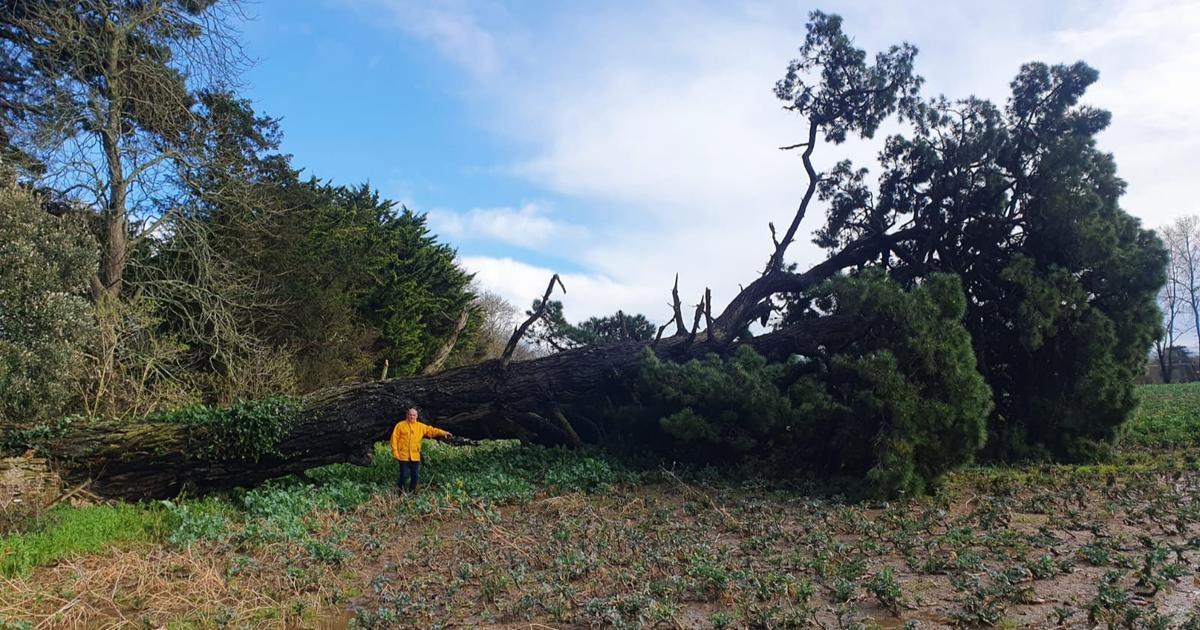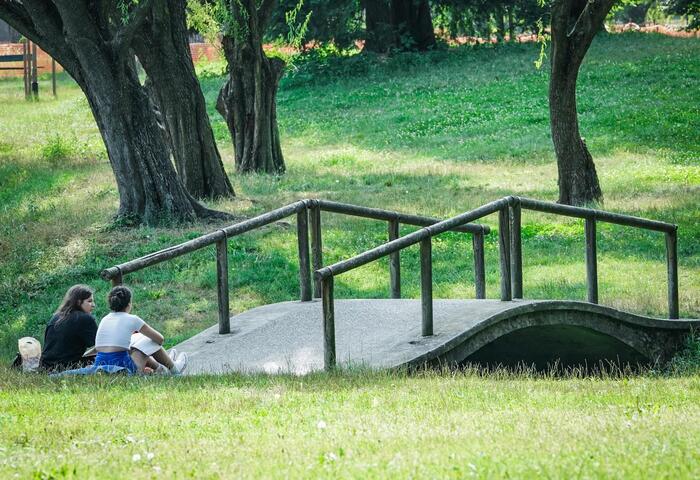More than 20 trees or groups of trees in the district are natural monuments.
We explain what makes them so special in a series with a loose sequence.
Today: Two oaks that are around 300 years old and a very rare beech on the lakeshore in Feldafing.
Feldafing
- In the midst of a millimeter-short mowed lawn, dozens of white golf balls and players in tank tops and trousers, it is enthroned: a 300-year-old pedunculate oak. Its bark is wrinkled and covered in places with moss, the branches are gnarled and several meters long, the leaves blow slightly in the wind. “I am awesome when I see a tree like this,” says Georg Hausmann, stroking the trunk with his hand. The employee of the Bavarian Administration of State Palaces, Gardens and Lakes has been looking after around 3500 trees in the 90 hectare Feldafinger Park and on the Rose Island for 20 years. In addition to the pedunculate oak, two other trees have the status of natural monument there.
“This oak already existed before the park was laid out by King Maximilian II 170 years ago,” says Hausmann, pointing to the tree with a trunk circumference of 5.20 meters.
About 300 years ago when the oak was planted, the park consisted of agricultural land and lakeside marshland.
“Back then, people mainly sown hats,” says Hausmann.
The acorns of the unloading trees served as fodder for pigs that grazed under the oaks.
+
This pedunculate oak stands in the middle of Feldafing Park.
© Andrea Jaksch
Today not much in the park is reminiscent of that time - except for the majestic deciduous trees. Only three of them are listed as natural monuments, but ten trees are around 300 years old. “That's a real rarity,” says Hausmann. If the trees were in a private garden - of that the 50-year-old is certain - they would all be natural monuments. “The nature conservation authority knows that they are in good hands with us, which is why they are holding back with more monuments,” says Hausmann. As soon as the tree is under nature protection, changes are only possible with the approval of the nature conservation authority. “Most of the time we leave the trees alone and do as little as possible,” says Hausmann. However, Hausmann and his team check the plants for stability once a year - and more often after storms.
The second protected oak, which is also on the golf course, was badly damaged in a hurricane in March 2015.
Strong gusts of wind tore out the eastern trunk of the 22 meter high and 300 year old pedunculate oak.
"It's very sad and frustrating to see what a storm can do," says Hausmann.
Fortunately, the oak was able to recover, but other trees had to be felled.
However, the dead wood of the listed oak that emerged after the storm has something good: It provides a habitat for a large number of beetles.
“In general, oaks are very rich in structure.
Bats live in the branch caves, birds live in the crowns and insects in the cracks, ”says Hausmann, while he leans his head back and looks at the top of the tree.
+
The slit-leaved beech on Rose Island is a very rare tree.
© Andrea Jaksch
The third natural monument is on Rose Island and was only awarded this year.
King Ludwig's father, King Maximilian II, had the 200-year-old, very rare, slit-leaved beech planted around 1850.
"Back then, exotic trees were a kind of luxury," says Hausmann.
“Like expensive cars today.
Nobles have adorned their gardens and parks with rare trees. ”Instead of the typical oval beech leaves, the slit-leaved beech has leaves that are reminiscent of the shape of a fir tree.
The small twigs crack under Hausmann's work shoes as he searches the ground under the 26-meter-wide beech tree. Suddenly he kneels and points to a young branch that is sprouting from the earth. “The slit-leaved beech cannot actually multiply because it is a mutation,” says Hausmann. The sprout with the rare leaves is a miracle of nature.









